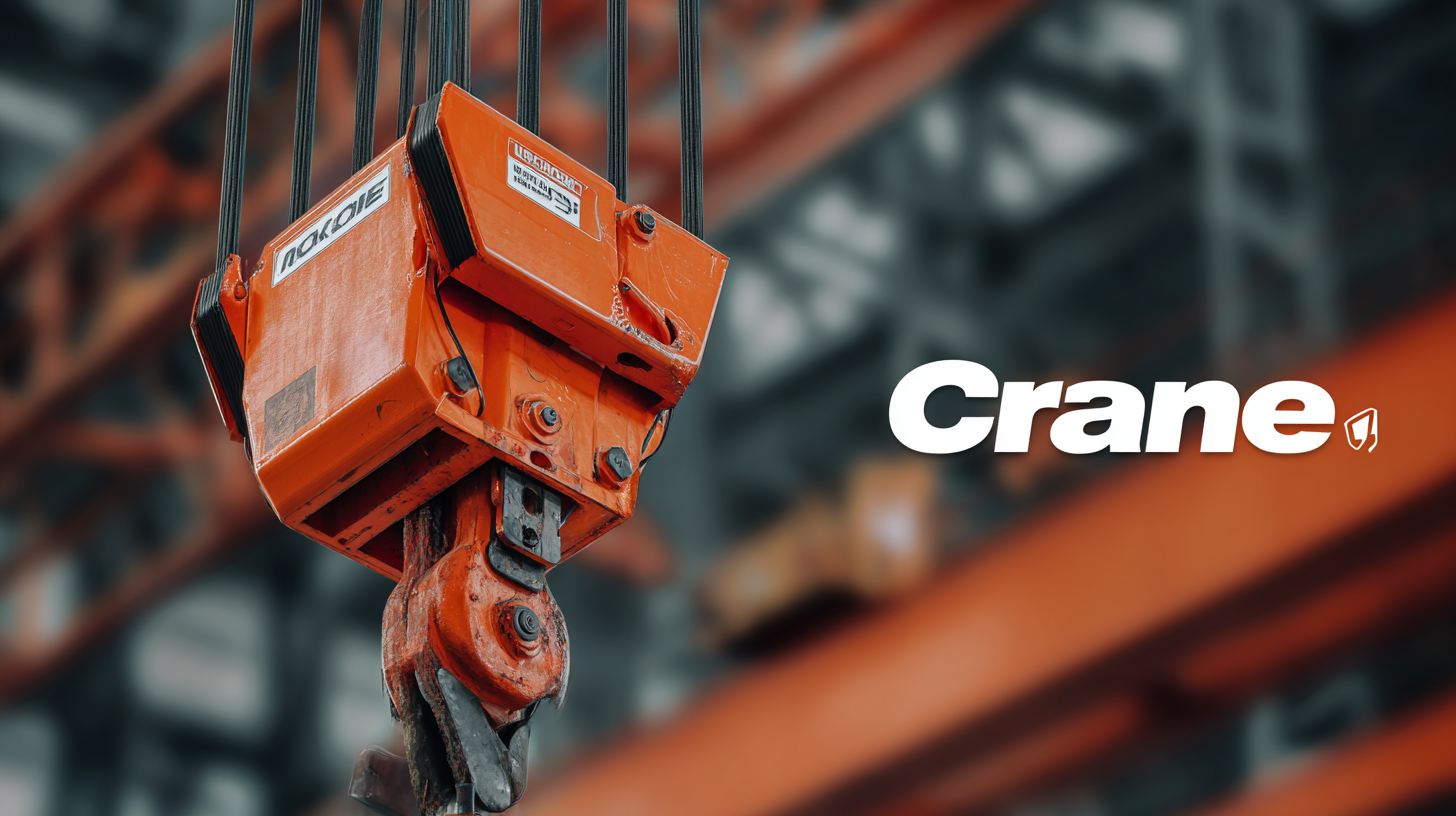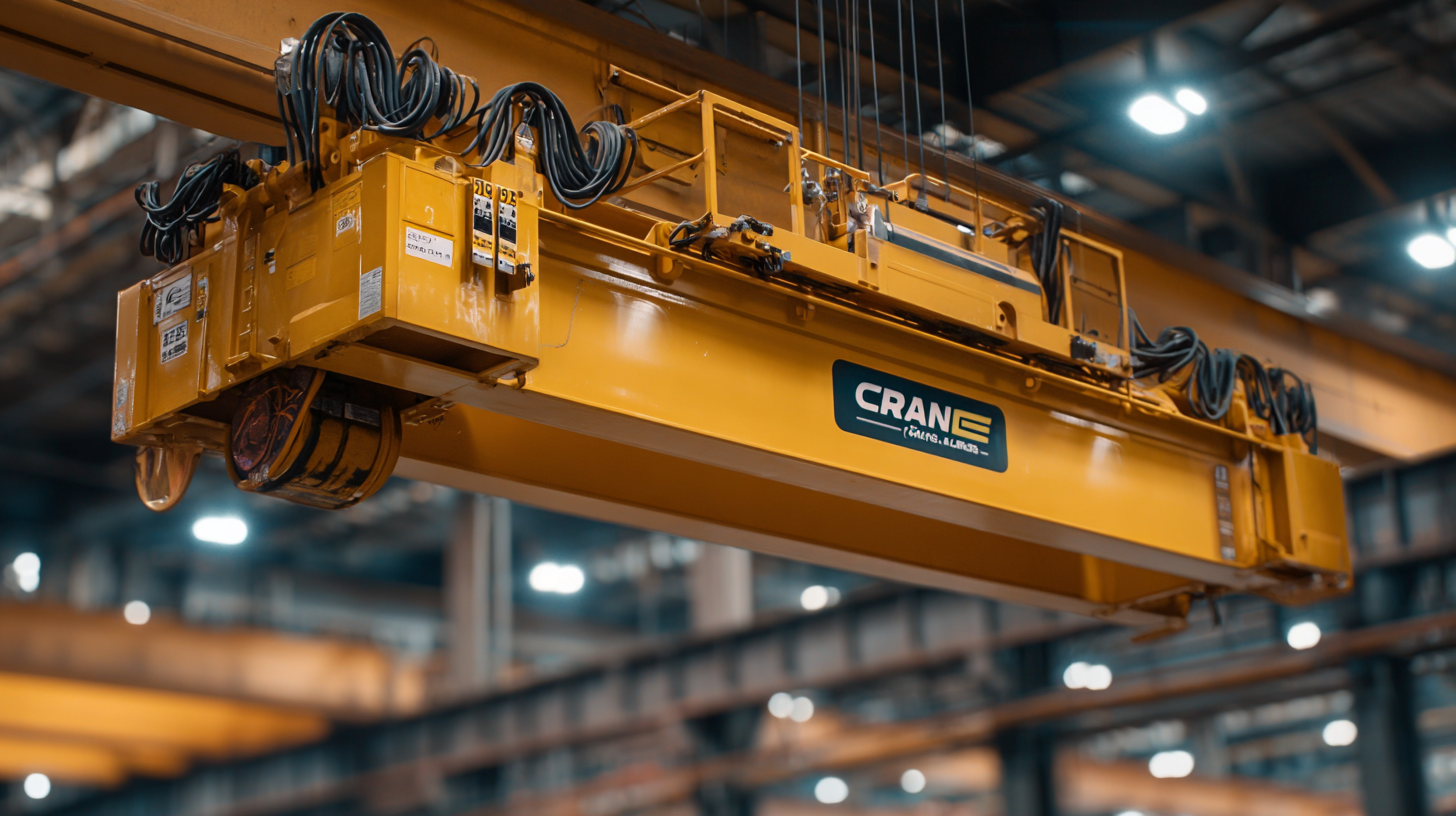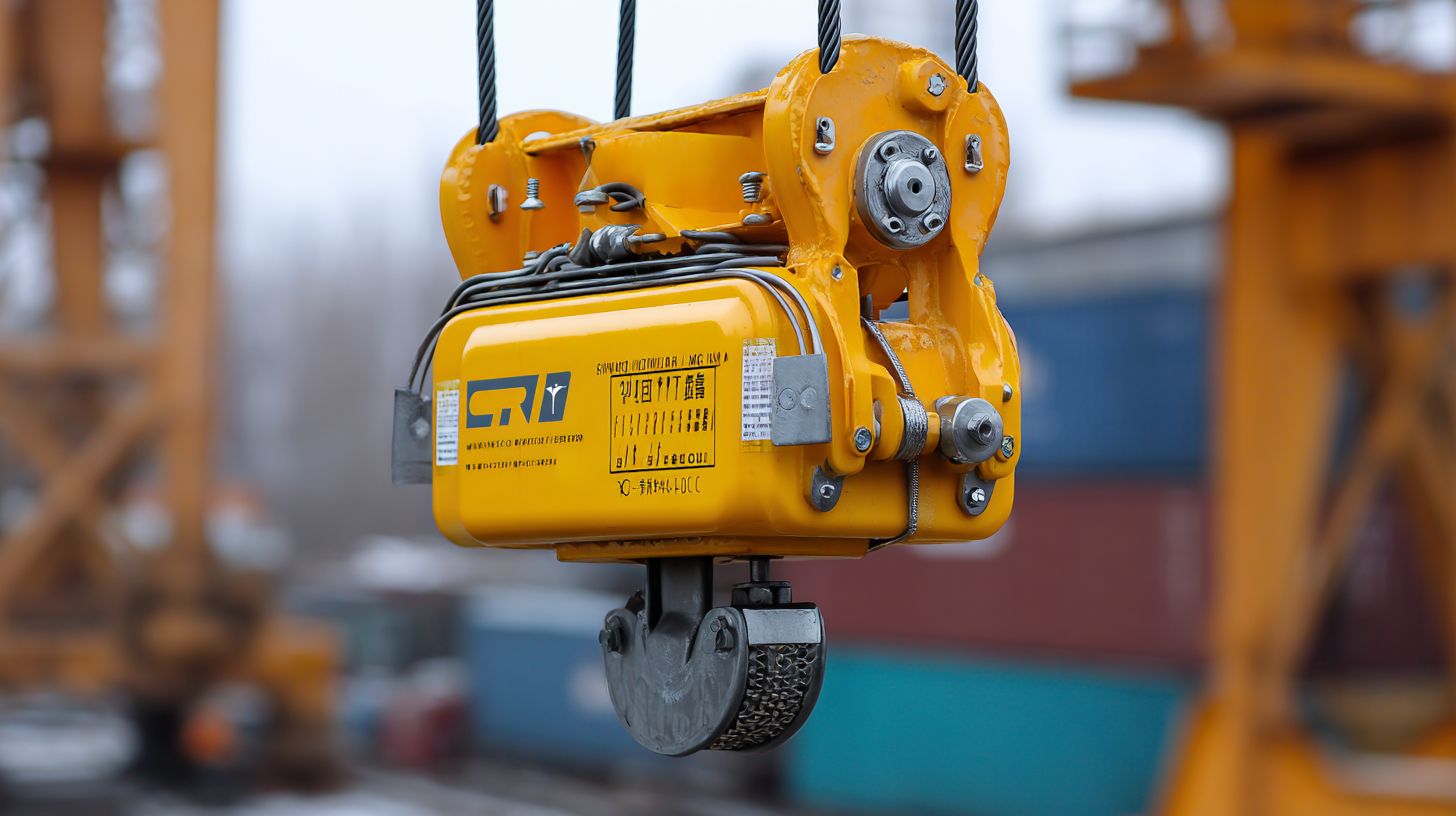Understanding the Technical Specifications of the Best Crane Hoist for Optimal Performance
In the ever-evolving landscape of industrial machinery, understanding the technical specifications of a Crane Hoist is crucial for ensuring optimal performance and efficiency. As businesses increasingly rely on advanced lifting solutions, the demand for high-quality crane hoists continues to rise. This blog will delve into the key features and specifications that set the best crane hoists apart, emphasizing their roles in enhancing operational productivity and safety. We will explore various types of crane hoists available in the market, their technological advancements, and how these innovations are shaping the future of material handling. By equipping yourself with this knowledge, you can make informed decisions that lead to improved lifting operations and sustained success in your industry.

Key Factors to Consider When Choosing a Crane Hoist
When selecting a crane hoist, there are several key factors to consider that can significantly impact operational performance and safety. First and foremost, understanding the load capacity is crucial. The hoist must be capable of handling the maximum weight of the materials involved in your operations. Always take into account not just the current needs but also potential future requirements, ensuring the hoist can accommodate increased loads.
Another vital aspect is the speed and control features of the crane hoist. Opt for models that offer smooth acceleration and deceleration, as this enhances safety and minimizes wear and tear. Additionally, look for advanced anti-sway technology, which can stabilize the load and improve maneuverability, particularly in tight or challenging spaces.
Lastly, consider the maintenance and modernization options available for the crane hoist. Regular maintenance ensures longevity and optimal performance, while the ability to integrate modern technologies can keep your operations efficient and safe. Investing in a hoist that allows for future upgrades can provide a competitive edge in an evolving market.
Understanding the Technical Specifications of the Best Crane Hoist for Optimal Performance
| Specification | Description | Importance |
|---|---|---|
| Load Capacity | The maximum weight a crane hoist can lift, typically measured in tons. | Ensures safety and efficiency in lifting operations. |
| Lift Height | The maximum vertical distance the hoist can lift the load. | Critical for applications with height restrictions. |
| Power Source | Type of power used (electric, hydraulic, air-powered). | Affects operational cost and suitability for specific environments. |
| Speed | The lifting speed, usually measured in meters per minute. | Affects productivity and cycle time in operations. |
| Control Type | Type of controls used (manual, remote, wireless). | Influences operator convenience and safety. |
| Duty Cycle | Indicates how often the hoist can be used without overheating. | Determines the suitability for continuous or intermittent use. |
| Safety Features | Includes features like overload protection, emergency stop. | Essential for preventing accidents and ensuring safe operation. |
| Weight | The total weight of the hoist itself, affecting portability. | Important for ease of transport and installation. |
Types of Crane Hoists: An Overview of Options Available
When it comes to selecting the right crane hoist for your operations, it’s essential to understand the various types available in the market. Among the most common crane hoists are electric hoists, which offer ease of use and efficiency, especially in high-volume applications. Manual hoists are also popular, particularly in environments where electrical supply is limited. For heavy-duty tasks, pneumatic hoists are ideal as they provide power through compressed air, making them suitable for hazardous environments.
**Tip:** Before making a decision, assess your lifting capacity requirements and the frequency of use. This will help narrow down your options.
Additionally, gantry hoists are versatile choices that can be moved easily within a workspace, while overhead hoists are fixed installations beneficial for repetitive tasks. Chain hoists, on the other hand, are known for their reliability and are typically used in industries where space is limited.
**Tip:** Consider the workspace layout and lifting height needed when selecting a hoist type to ensure safety and optimal performance.
Understanding the Technical Specifications of Crane Hoists
This bar chart illustrates the lifting capacities of different types of crane hoists available in the market. The data represents various hoist types measured in tons, showcasing their optimal performance metrics.
Understanding Load Capacity and Performance Metrics
When it comes to choosing the best crane hoist for optimal performance, understanding load capacity and performance metrics is crucial. Load capacity is often quantified in gross weight and net weight. Gross weight refers to the total weight of a load including all packaging, while net weight is the weight of the product itself. Calculating these weights accurately is essential to prevent overload, which can not only damage the equipment but can also pose serious safety risks.
Recent advancements in technology have introduced magnetoelastic load cells, which have shown exceptional reliability and performance in industrial applications, including paper mills. These load cells offer precise measurements that are vital for monitoring the load capacity of crane hoists. Performance metrics, such as response time and accuracy, are paramount when evaluating the efficiency of different hoisting systems. Furthermore, understanding the different benchmarks in load measurements can help operators select a hoist that not only meets their operational needs but also adheres to industry safety standards. This knowledge enables businesses to enhance their operational efficiency while minimizing risks associated with load management.

Essential Safety Features in Crane Hoists
When it comes to crane hoists, safety features are paramount to ensure both operator and site safety. According to a report by the American Society of Mechanical Engineers (ASME), nearly 45% of crane-related accidents are linked to equipment failure or improper operation. Therefore, investing in crane hoists that come equipped with advanced safety mechanisms is critical. Key features include overload protection systems, which prevent lifting loads that exceed the hoist's capacity, and automatic shut-off mechanisms that kick in during emergency situations.
Moreover, additional features such as limit switches, which halt the hoist when the load reaches its maximum height, and emergency stop buttons are essential for minimizing risk. A survey conducted by the Occupational Safety and Health Administration (OSHA) found that implementing these safety systems can reduce the likelihood of workplace injuries by up to 30%. Enhanced visibility features, like LED lights and reflective materials, also contribute to safer operations, especially in low-light conditions, by ensuring that operators can effectively monitor their surroundings. Investing in crane hoists with robust safety features not only protects personnel but also contributes to a significantly more efficient and compliant work environment.
Maintenance Tips for Maximizing Crane Hoist Efficiency
Proper maintenance of crane hoists is crucial for ensuring their efficiency and longevity. According to a report by the Crane Reliability Study, regular maintenance can increase equipment lifespan by up to 30%. Ensuring that a crane hoist is well-maintained not only optimizes its performance but also improves safety on job sites. Regular inspections can help identify potential wear and tear, enabling timely repairs that prevent operational downtime.
One effective tip for maximizing crane hoist efficiency is to perform routine lubrication of all moving parts. This reduces friction and wear, leading to smoother operation and extending the life of the hoist. Additionally, keep the hoist clean from dust and debris, as buildup can affect its mechanical components. A survey by the Association of Equipment Manufacturers noted that nearly 40% of equipment failures are attributed to inadequate cleaning and maintenance practices.
Finally, consider implementing a structured maintenance schedule based on the hoist manufacturer's guidelines. For example, an annual load testing and inspection can ensure that the hoists are functioning within their rated capacities. Following these maintenance tips not only ensures optimal performance but also contributes to a safer work environment.

